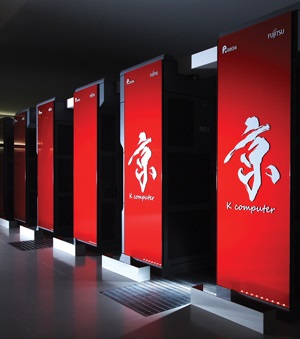CLOUD
RIKEN’s K supercomputer simulates brain activity

Researchers at the RIKEN HPCI Program for Computational Life Sciences, the Okinawa Institute of Science and Technology Graduate University and Forschungszentrum Jülich, an interdisciplinary research center based in Germany, have carried out the largest neuronal network simulation to date by exploiting the full computational power of the K computer—RIKEN’s supercomputer in Kobe.
The team led by RIKEN alumni Markus Diesmann and Abigail Morrison—both now based at Forschungszentrum Jülich’s Institute of Neuroscience and Medicine—used advanced data structures developed for the open-source Neural Simulation Technology (NEST) tool to replicate a network consisting of 1.73 billion nerve cells connected by 10.4 trillion synapses. To realize this feat, the program recruited 82,944 processors from the K computer.
While significant in size, the simulated network represents a mere 1% of the neuronal network in the human brain. Even with the K computer’s significant computational power, the process took 40 minutes to simulate 1 second’s worth of neuronal network activity. However, rather than providing new insight into the brain, the project’s primary objective was to test the limits of the simulation technology—as well as the capabilities of the K supercomputer.
Through their efforts, the researchers were able to gather invaluable knowledge that will guide the construction of new simulation software. In addition, their achievement offers neuroscientists a glimpse of what can be achieved by using the next generation of computers—so-called exascale computing.
“If petascale computers like the K computer are capable of representing 1% of the network of a human brain today, then we know that simulating the whole brain at the level of the individual nerve cell and its synapses will be possible with exascale computers—hopefully available within the next decade,” said Diesmann.
